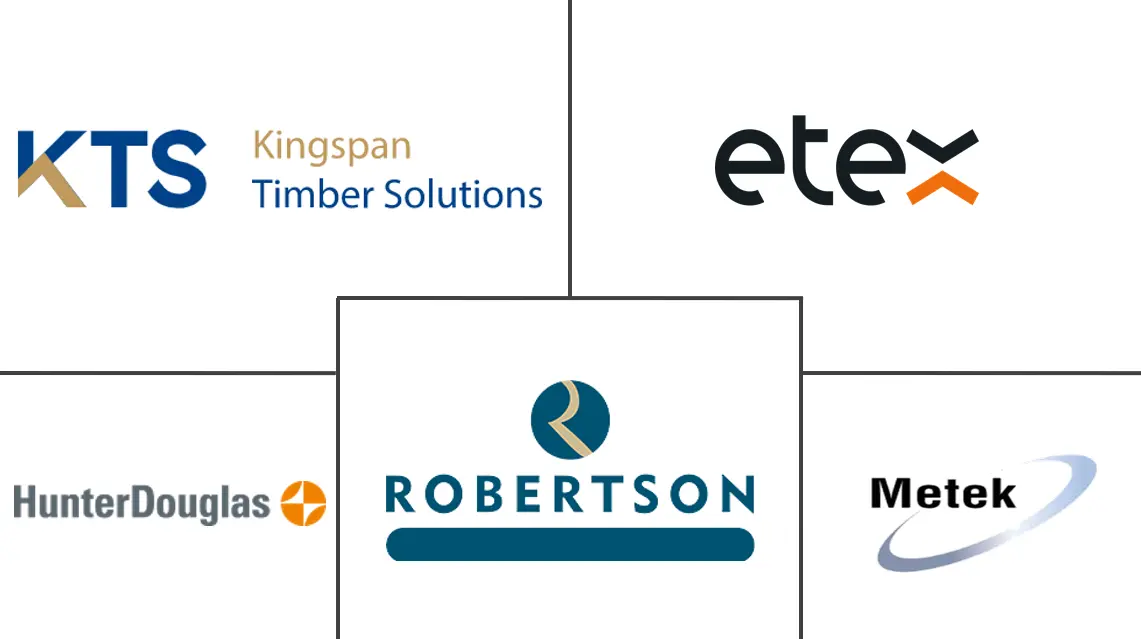Panelized Modular Building Systems Market Size and Share
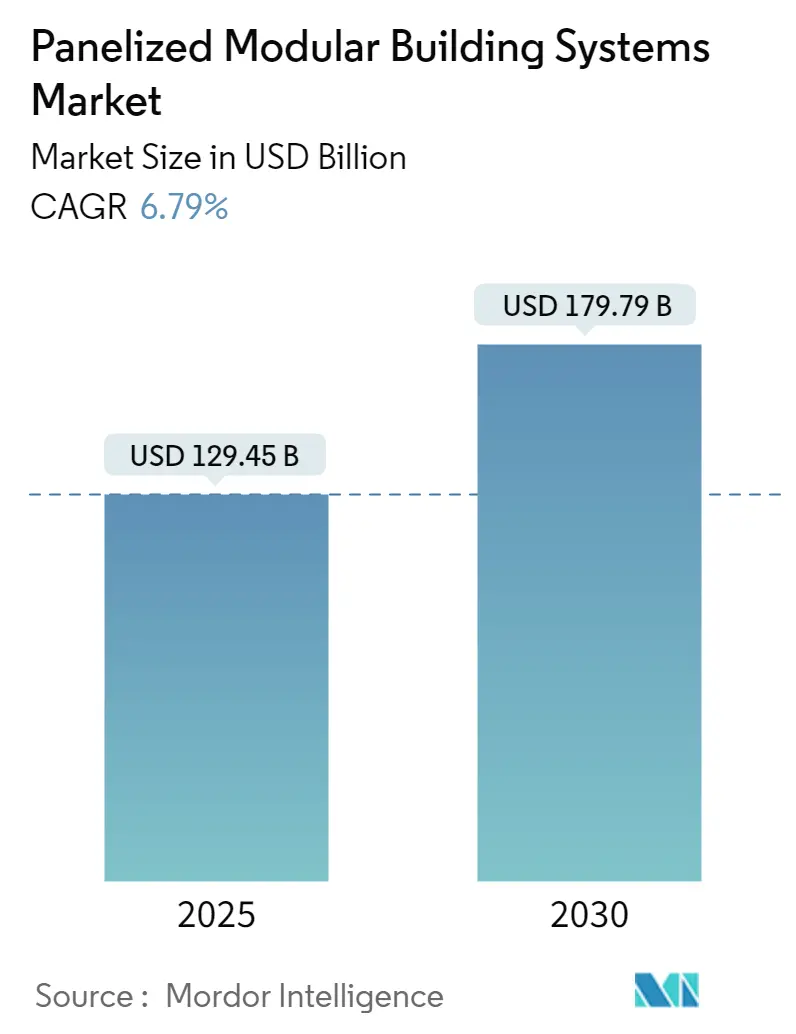
Panelized Modular Building Systems Market Analysis by Mordor Intelligence
The Panelized Modular Building Systems Market size is estimated at USD 129.45 billion in 2025, and is expected to reach USD 179.79 billion by 2030, at a CAGR of 6.79% during the forecast period (2025-2030).
The COVID-19 pandemic in 2020 and the first half of 2021 drastically curtailed the global construction sector due to imposed government bans and restrictions, thereby limiting the panelized modular building systems market growth. Residential real estate was the worst hit as strict lockdown measures across significant cities resulted in the suspension of home registrations and slow home loan disbursements. However, the construction sector has been recovering well since restrictions were lifted. An increase in house sales, new project launches, and increasing demand for new offices and commercial spaces have been leading the market recovery.
- Over the medium term, the rising demand for off-site construction and increasing demand for structural insulated panels in energy-efficient prefabricated homes are the major driving factors augmenting the growth of the market studied. Furthermore, favorable government incentives and policies supporting energy-efficient building construction are propelling the project contractors to incorporate panelized building systems in new and renovation constructions.
- On the flip side, the requirement of transportation logistics to bring the prefabricated materials on-site is the key factor anticipated to restrain the growth of the target industry over the forecast period.
- Nevertheless, the increasing investment in infrastructure and commercial constructions in developing economies and the implementation of building information modeling (BIM) will likely create lucrative growth opportunities for the global market soon.
- Asia-Pacific is expected to dominate the market during the forecast period. This growth is attributed to the bullish demand for roof panels, floor panels, wall modules, and various other products in the residential, commercial, industrial, and infrastructure sectors.
Global Panelized Modular Building Systems Market Trends and Insights
Residential Segment to Dominate the Market
- The residential industry is the primary end-user industry for the global panelized modular building systems market. These systems offer design flexibility and precision in building with controlled costs and reduced construction time. This advantage goes well with the growing demand for permanent housing and rising preference for a shorter delivery time of construction projects.
- Factors like minimized hassles due to reduced debris from home construction and demolition activities, home builders' continued pursuit of maintaining a profitable construction pace, and growing awareness toward the construction of energy-efficient residential places which are in perfect sync with the prefabricated construction practices are driving the market penetration of the panelized modular building systems in the residential segment.
- The rising number of migrants in the United States and European countries has increased the pressure on existing residential infrastructure. Hence, these countries, dwelling with advanced infrastructure and real estate spaces, are witnessing a gradual lead in reconstruction and renovation projects and new residential constructions.
- In 2022, the US government announced its plans to invest USD 3.16 billion to transform around 450,000 homes in low incomes areas to energy-efficient structures to cut down the country's utility bills.
- To cut down energy use and GHG emissions, the European Union policymakers, in 2021, have recommended renovations of all worst energy-rating buildings by 2030, keeping residential buildings on priority.
- In Germany, the new coalition government has planned to build 400,000 new housing units every year, of which 100,00 units will be publicly subsidized.
- China is the world's largest construction market. As China recovered from the pandemic doom, many residential constructions kick-started in the country. China's Evergrande Group has committed to building 600,000 homes in 2022. The housing authorities of Hong Kong launched several measures to push start the construction of low-cost housing. The officials aim to provide 301,000 public housing units in 10 years till 2030.
- India is likely to witness an investment of around USD 1.3 trillion in housing over the next seven years. It is likely to witness the construction of 60 million new homes. The availability of affordable housing is expected to rise by around 70% in 2024. The Indian government's 'Housing for All by 2022' is also a significant game-changer for the industry. This initiative which aimed to build more than 20 million affordable homes for the urban poor by 2022, has been extended to 2024 with a target of delivering 29.5 million pucca houses.
- Considering all the above facts and factors, the usage and demand of panelized modular building systems for residential construction applications are expected to grow in the forecast period.
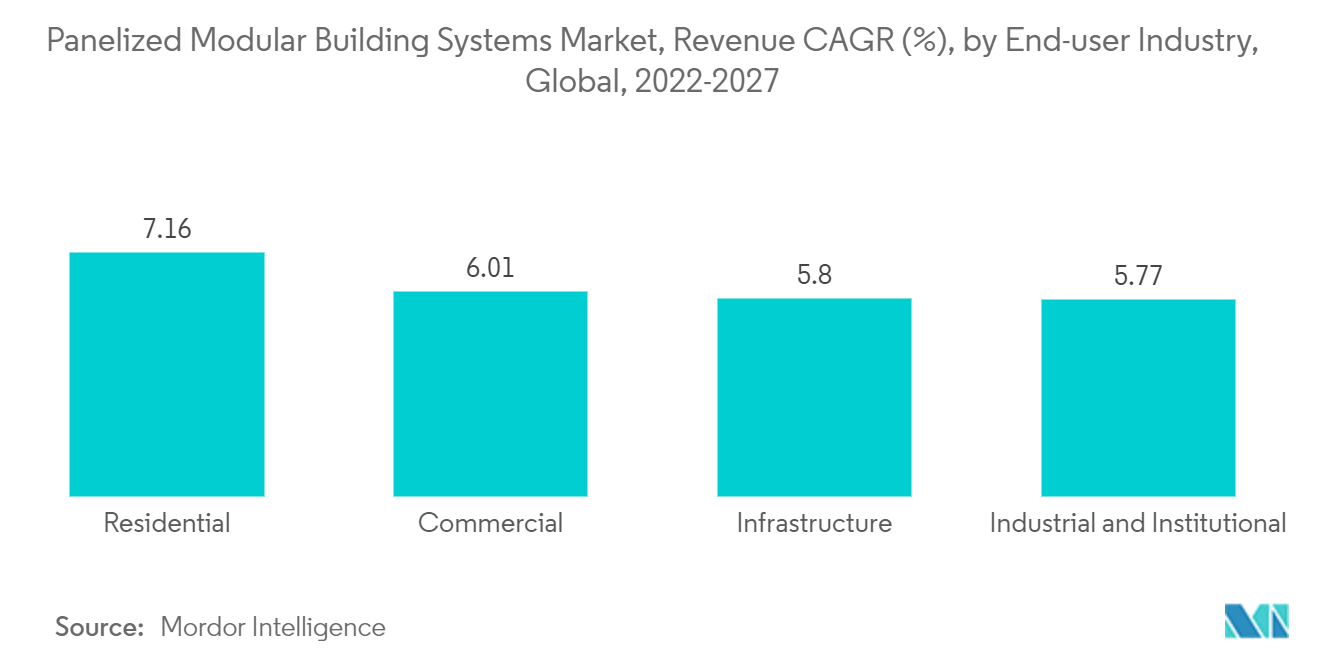
Asia-Pacific Region to Dominate the Market
- Asia-Pacific dominated the worldwide market with a significant market share and is projected to maintain its dominance during the forecast period. The Asia-Pacific region, with low manufacturing costs, cheap labor sourcing, and a remarkably large customer base, has a substantial inflow of FDI, with India and China being the primary beneficiaries. The region's favorable economic climate has boosted demand for houses, hotels, shopping malls, high-rise buildings, and stadiums.
- As per the forecast given by the Ministry of Housing and Urban-Rural Development, China's construction sector is expected to maintain a 6% share of the country's GDP going into 2025. Considering the given forecasts, the Chinese government unveiled a five-year plan in January 2022 focused on making the construction sector more sustainable and quality driven. China plans to increase the construction of prefabricated buildings to reduce pollution and waste from construction sites. Further, the construction industry will be transitioning to modernized practices, establishing low carbon-production modes and improving the quality of buildings, consequently increasing the demand for panelized modular building systems in the country.
- Additionally, the Chinese government has rolled out massive construction plans, which include making provisions for the movement of 250 million rural people to its new megacities over the next ten years, creating significant scope for panelized modular building systems in the future.
- As per the Invest India Report, India's construction industry is heading to reach USD 1.4 trillion market size by 2025, supported by schemes about the smart city mission targeting the transformation of 100 cities and affordable housing. Under National Investment Promotion, India has an investment budget of USD 1.4 trillion on infrastructure - 24% on renewable energy, 19% on roads and highways, 16% on urban infrastructure, and 13% on railways.
- Japan is a significant area in the field of skyscrapers and high-rise buildings. Many luxury apartments and residential complexes are under construction in Japan. For instance, Mitsubishi State is constructing Japan's tallest building, comprising 50 luxury apartments, each generating USD 43,000 monthly rent. The project is being built near the Tokyo station and will reach completion by 2027.
- The South Korean government has outlined its plan to execute large-scale redevelopment projects to supply 830,000 housing units in Seoul and other cities by 2025. From the planned construction, Seoul will get 323,000 new houses, and 293,000 will be built near Gyeonggi Province and Incheon. Significant cities like Busan, Daegu, and Daejeon will also benefit with 220,000 new houses in 4 years.
- All factors above are likely to fuel the growth of the panelized modular building systems market in Asia-Pacific over the forecast period.
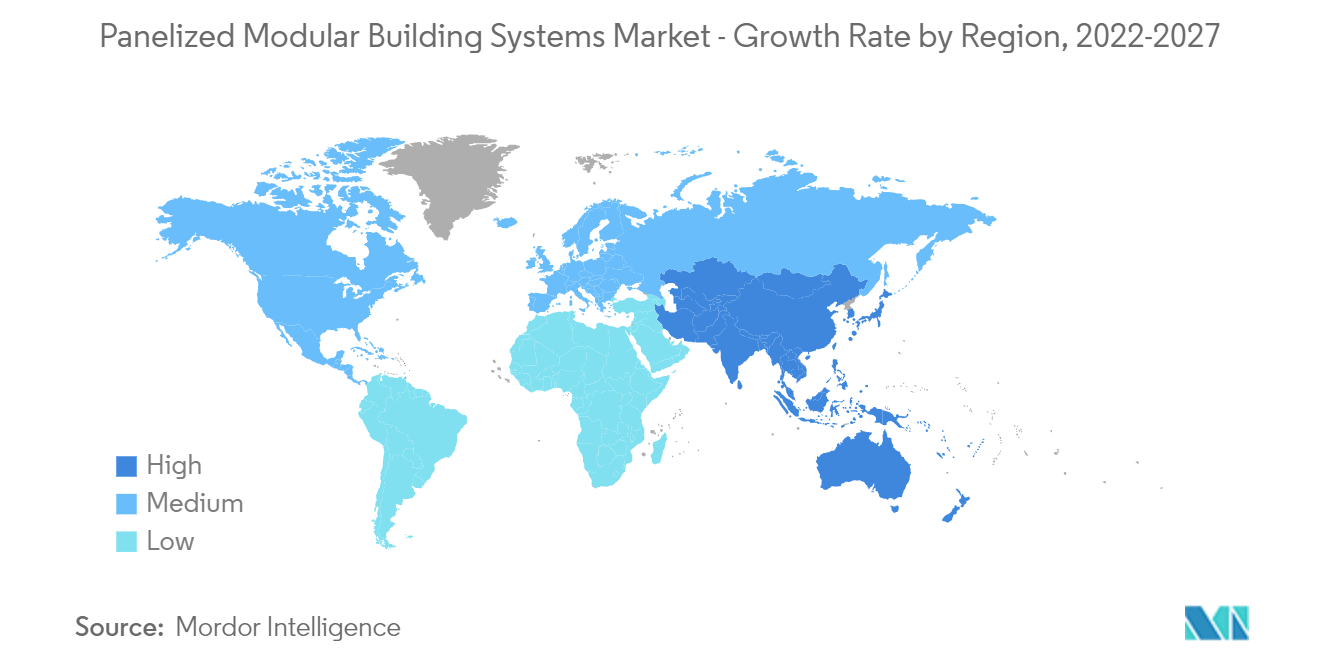
Competitive Landscape
The panelized modular building systems market is fragmented, with many players holding insignificant shares to individually affect the market demand. Some of the major players in the market (in no particular order) include Kingspan Timber Solutions (Kingspan Group), Robertson Group Ltd, Etex Building Performance, Hunter Douglas Group, and Metek PLC.
Panelized Modular Building Systems Industry Leaders
-
Kingspan Timber Solutions (Kingspan Group)
-
Robertson Group Ltd
-
Etex Building Performance
-
Hunter Douglas Group
-
Metek PLC
- *Disclaimer: Major Players sorted in no particular order
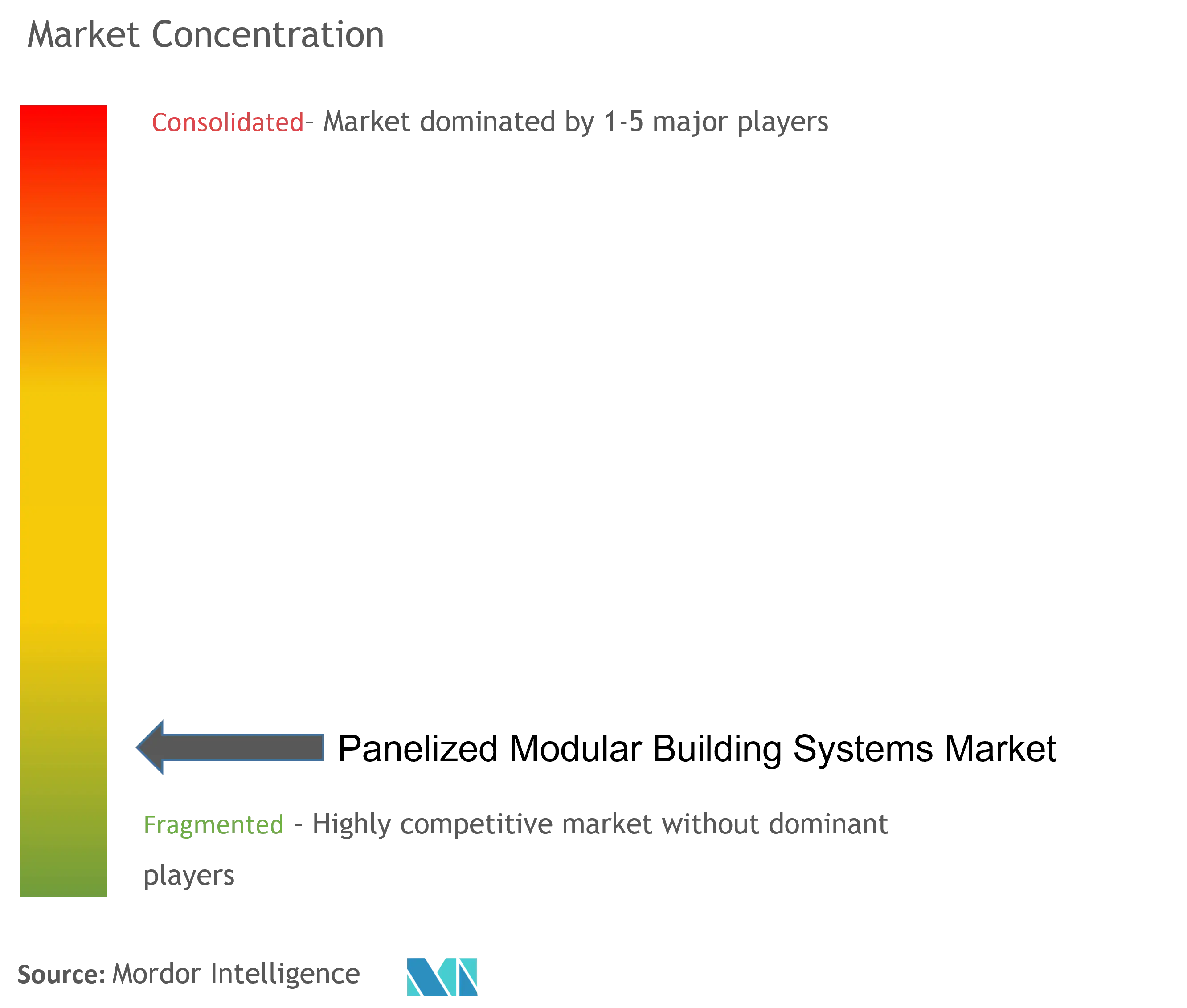
Recent Industry Developments
- March 2021: Saint-Gobain acquired a majority stake in Germany's key manufacturer and installer of turnkey modular timber construction, Brüggemann Holzbau Group. The acquired company now operates under the name Saint-Gobain Brüggemann Holzbau GmbH. The acquisition gave Saint-Gobain a higher edge in sustainable prefabricated construction solutions and increased its visibility in the German markets.
Global Panelized Modular Building Systems Market Report Scope
Panelized modular building systems incorporate construction techniques that use advanced technology, quality materials, and a controlled work environment for building energy-efficient homes in less time. These systems form a crucial part of the new-age construction approach where components such as the floor, windows, or wall panels are prefabricated in factories and shipped to the construction site to build the desired structure.
The panelized modular building systems market is segmented by panel type, product type, end-user industry, and geography. By panel type, the market is segmented into wall modules, roof panels, floor panels, and other panel types. By product type, the market is segmented into timber frame, light gauge structural steel framing, concrete, and other product types. By end-user industry, the market is segmented into residential, commercial, infrastructure, and industrial and institutional. The report also covers the market size and forecasts for the panelized modular building systems market in 15 countries across major regions. For each segment, the market sizing and forecasts have been done based on revenue (USD million).
| Wall Modules |
| Roof Panels |
| Floor Panels |
| Other Panel Types |
| Timber Frame |
| Light Gauge Structural Steel Framing |
| Concrete |
| Other Product Types |
| Residential |
| Commercial |
| Infrastructure |
| Industrial and Institutional |
| Asia-Pacific | China |
| India | |
| Japan | |
| South Korea | |
| ASEAN Countries | |
| Rest of Asia-Pacific | |
| North America | United States |
| Canada | |
| Mexico | |
| Europe | Germany |
| United Kingdom | |
| France | |
| Italy | |
| Rest of Europe | |
| South America | Brazil |
| Argentina | |
| Rest of South America | |
| Middle East and Africa | Saudi Arabia |
| South Africa | |
| Rest of Middle East and Africa |
| By Panel Type | Wall Modules | |
| Roof Panels | ||
| Floor Panels | ||
| Other Panel Types | ||
| By Product Type | Timber Frame | |
| Light Gauge Structural Steel Framing | ||
| Concrete | ||
| Other Product Types | ||
| By End-user Industry | Residential | |
| Commercial | ||
| Infrastructure | ||
| Industrial and Institutional | ||
| By Geography | Asia-Pacific | China |
| India | ||
| Japan | ||
| South Korea | ||
| ASEAN Countries | ||
| Rest of Asia-Pacific | ||
| North America | United States | |
| Canada | ||
| Mexico | ||
| Europe | Germany | |
| United Kingdom | ||
| France | ||
| Italy | ||
| Rest of Europe | ||
| South America | Brazil | |
| Argentina | ||
| Rest of South America | ||
| Middle East and Africa | Saudi Arabia | |
| South Africa | ||
| Rest of Middle East and Africa | ||
Key Questions Answered in the Report
How big is the Panelized Modular Building Systems Market?
The Panelized Modular Building Systems Market size is expected to reach USD 129.45 billion in 2025 and grow at a CAGR of 6.79% to reach USD 179.79 billion by 2030.
What is the current Panelized Modular Building Systems Market size?
In 2025, the Panelized Modular Building Systems Market size is expected to reach USD 129.45 billion.
Who are the key players in Panelized Modular Building Systems Market?
Kingspan Timber Solutions (Kingspan Group), Robertson Group Ltd, Etex Building Performance, Hunter Douglas Group and Metek PLC are the major companies operating in the Panelized Modular Building Systems Market.
Which is the fastest growing region in Panelized Modular Building Systems Market?
Asia-Pacific is estimated to grow at the highest CAGR over the forecast period (2025-2030).
Which region has the biggest share in Panelized Modular Building Systems Market?
In 2025, the Asia-Pacific accounts for the largest market share in Panelized Modular Building Systems Market.
What years does this Panelized Modular Building Systems Market cover, and what was the market size in 2024?
In 2024, the Panelized Modular Building Systems Market size was estimated at USD 120.66 billion. The report covers the Panelized Modular Building Systems Market historical market size for years: 2019, 2020, 2021, 2022, 2023 and 2024. The report also forecasts the Panelized Modular Building Systems Market size for years: 2025, 2026, 2027, 2028, 2029 and 2030.
Page last updated on:
Panelized Modular Building Systems Market Report
Statistics for the 2025 Panelized Modular Building Systems market share, size and revenue growth rate, created by Mordor Intelligence™ Industry Reports. Panelized Modular Building Systems analysis includes a market forecast outlook for 2025 to 2030 and historical overview. Get a sample of this industry analysis as a free report PDF download.
